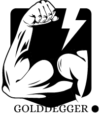Introduction to Site Speed and SEO
In today’s digital landscape, speed is crucial—not just for user satisfaction but also for how well a website ranks in search engines. Google, along with other search engines, values the performance of a website, especially its loading speed. Faster sites not only deliver a smoother experience to users but also lead to higher engagement, lower bounce rates, and better conversions. For those reasons, optimizing site speed is a vital step in any SEO strategy.
Why Site Speed Matters for SEO Rankings
Site speed directly influences your SEO rankings. Google has emphasized the importance of speed as a key factor in its algorithms, considering it one of the ranking signals that affect how sites appear on the search engine results page (SERP). A slower site frustrates users, resulting in higher bounce rates and lower dwell time, both of which signal to search engines that the experience is subpar. Faster websites, on the other hand, keep users engaged longer, leading to more page views and greater user satisfaction, which can improve rankings over time.
Understanding Core Web Vitals and Their Importance
Google introduced Core Web Vitals as a way to measure a site’s user experience quantitatively. These metrics assess elements of page loading, interactivity, and stability:
- Largest Contentful Paint (LCP): Measures loading performance, targeting a load time of 2.5 seconds or faster.
- First Input Delay (FID): Evaluates interactivity, ensuring it responds to user inputs within 100 milliseconds.
- Cumulative Layout Shift (CLS): Measures visual stability, aiming to prevent unexpected shifts in content layout.

Each of these factors contributes to how Google ranks a site. Improving your Core Web Vitals is essential to delivering a smooth experience that meets search engine standards.
The Impact of Page Load Time on User Experience
A site’s load time has a significant impact on user experience, affecting how visitors perceive a brand. Long load times can lead to frustration, causing users to leave the site before it even fully loads. Studies show that as page load time increases from 1 to 10 seconds, the probability of a mobile site visitor bouncing increases by 123%. By improving load time, businesses often see a direct boost in user engagement and even in sales. For instance, Amazon found that for every 100 milliseconds of improvement, they saw a 1% increase in revenue. Optimizing load time is not only about SEO but also about driving better user interactions and outcomes.
Tools to Measure Site Speed Effectively
To understand your site’s current performance, you’ll need the right tools. Here are some of the most effective options:
- Google PageSpeed Insights: This free tool provides detailed insights on your site’s performance and suggestions for improvement, covering both mobile and desktop views.
- GTmetrix: Offers detailed reports on load time, page size, and other metrics while providing actionable steps to improve speed.
- Pingdom: Simple yet powerful, Pingdom allows you to test website speed from various locations around the world.
- WebPageTest: Known for its in-depth performance analysis, WebPageTest allows custom settings for a more precise view of how your site loads.

Comparing results from multiple tools gives a comprehensive view of your site’s performance and helps identify specific areas for improvement.
Strategies for Improving Site Speed
Improving site speed involves several tactics that target various technical aspects of a website. Here are some core strategies to focus on:
Optimizing Images and Videos
Images are often the largest files on a website and can drastically affect loading speed if not optimized. Compressing images without losing quality is critical. Additionally, using the right image format (such as WebP) can further reduce file size. Videos, too, should be hosted externally or loaded through a content delivery network (CDN) to minimize strain on the website.
Reducing Server Response Time
Server response time, also known as Time to First Byte (TTFB), is the time it takes for a user’s browser to receive the first byte of data from the server. A slower server response time can be due to various factors, such as low-quality hosting or unoptimized code. Choosing a reliable hosting provider and maintaining an optimized backend can significantly reduce server response time.

Using Browser Caching
Browser caching allows websites to store data on a user’s browser, which helps reduce load time when a visitor returns. By implementing caching, repeated site elements like logos, CSS files, and JavaScript libraries load from the user’s device rather than the server, which speeds up the loading process.
Compressing and Optimizing Images
Image compression is one of the most impactful ways to improve load time. When images are large, they increase the overall page size, slowing down load times. Compressing images reduces their size without compromising quality. Here are some tools and methods:
- TinyPNG and JPEG Optimizer: These tools compress PNG and JPEG images, reducing file size while maintaining clarity.
- ImageOptim: For Mac users, this tool helps compress images without losing quality, making it an efficient solution for faster loading.
- To optimize, make sure each image is correctly sized, set to the right resolution, and compressed to minimize file size.
Minifying CSS, JavaScript, and HTML
Minifying your site’s CSS, JavaScript, and HTML files involves removing unnecessary spaces, line breaks, and comments. This reduces the file size, enabling quicker load times. Tools like UglifyJS for JavaScript, CSSNano for CSS, and HTMLMinifier for HTML can help you automate this process. Many popular CMS platforms also offer plugins to handle minification.

Utilizing Content Delivery Networks (CDNs)
A Content Delivery Network (CDN) is a network of servers distributed globally to deliver content faster based on the user’s geographic location. By using a CDN, content like images, scripts, and stylesheets are cached across multiple servers, meaning users download data from the nearest server, which reduces load times and enhances the overall speed. Some popular CDN providers include Cloudflare, Akamai, and Amazon CloudFront.
Leveraging Browser Caching and Server Caching
Implementing browser and server caching can greatly improve load times for returning visitors. Browser caching saves data on the user’s device, while server caching stores frequently accessed data on the server. Both methods prevent data from reloading each time, resulting in a faster, smoother experience for users.
Reducing Redirects and Minimizing HTTP Requests
Redirects and excessive HTTP requests can delay a website’s loading time. Each redirect requires a new request and response cycle, which slows down the loading process. Minimize redirects by keeping URL structures simple, and reduce HTTP requests by consolidating scripts, stylesheets, and other assets wherever possible.

Choosing a Reliable Web Hosting Provider
A high-quality hosting provider can make a significant difference in site speed. Look for hosts that offer SSD storage, dedicated resources, and optimized servers for faster performance. Many premium hosting.

Create a website in seconds
Build a website in seconds with Hostinger AI website builder. No coding or design skills required. Perfect for complete beginners, all the way to web-building pros.
Follow simple steps to get your site built and filled with bespoke, search-engine friendly content. Customize it with an easy drag-and-drop editor before sharing your new website with the world. Click here for more details

